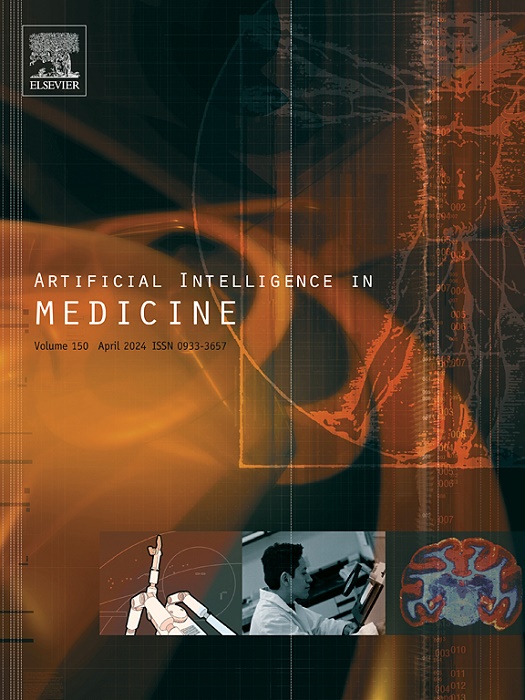Types, functions, and mechanisms of machine learning for personalizing smoking cessation interventions: A systematic scoping review
IF 6.2
2区 医学
Q1 COMPUTER SCIENCE, ARTIFICIAL INTELLIGENCE
引用次数: 0
Abstract
Purpose
Artificial intelligence can realize personalization. This systematic scoping review provides the types, functions, and mechanisms of machine learning (ML) for personalizing smoking cessation interventions.
Methodology
We searched fourteen databases including PubMed, CINAHL, EMBASE, the Cochrane Library, IEEE Xplore, PsycINFO, Scopus, Web of Science, AAAI, ACM Digital Library, ArXIV, Mednar, ProQuest, and Science.gov. We selected 98 articles from 4073 records that met the criteria. Two independent reviewers screened and selected the articles. Two reviewers extracted the data using a self-developed data charting form independently.
Results
The findings are reported in narrative syntheses, tables, and figures. The types of ML included artificial neural networks, Bayesian algorithms, clustering algorithms, decision tree algorithms, deep learning (DL) algorithms, ensemble algorithms, linear classifiers, others, and unspecified. The most common ML technique used was supervised learning (81 %), and the ML functions included (1) message tailoring (17 %), (2) prediction and detection of smoking events (34 %), (3) social media surveillance (14 %), (4) predictive models (24 %), and (5) biomarker analysis (10 %). The ML mechanisms involved the following sequence: data input, data preprocessing, feature extraction and selection, training and validation, and data output.
Conclusion
This review is the first to describe the potential use of ML for personalizing smoking cessation interventions. We provide recommendations for future research by identifying the limitations and gaps in the studies. Future studies should refine, validate, and test ML models using robust experimental methods to conclude their effectiveness.
用于个性化戒烟干预的机器学习的类型、功能和机制:一项系统的范围审查
人工智能可以实现个性化。本系统的范围综述提供了机器学习(ML)用于个性化戒烟干预的类型、功能和机制。方法检索PubMed、CINAHL、EMBASE、Cochrane Library、IEEE explore、PsycINFO、Scopus、Web of Science、AAAI、ACM Digital Library、ArXIV、Mednar、ProQuest、Science.gov等14个数据库。我们从4073条记录中选择了98篇符合标准的文章。两位独立审稿人对文章进行了筛选和选择。两位审稿人使用自行开发的数据图表表格独立提取数据。结果研究结果以叙述性综合、表格和图表的形式报道。ML的类型包括人工神经网络、贝叶斯算法、聚类算法、决策树算法、深度学习(DL)算法、集成算法、线性分类器、其他和未指定的。最常用的机器学习技术是监督学习(81%),机器学习功能包括(1)消息定制(17%),(2)吸烟事件预测和检测(34%),(3)社交媒体监控(14%),(4)预测模型(24%),(5)生物标志物分析(10%)。机器学习机制包括以下顺序:数据输入、数据预处理、特征提取和选择、训练和验证以及数据输出。这篇综述首次描述了ML在个性化戒烟干预中的潜在应用。我们通过识别研究中的局限性和差距,为未来的研究提供建议。未来的研究应该使用稳健的实验方法来完善、验证和测试ML模型,以得出其有效性。
本文章由计算机程序翻译,如有差异,请以英文原文为准。
求助全文
约1分钟内获得全文
求助全文
来源期刊

Artificial Intelligence in Medicine
工程技术-工程:生物医学
CiteScore
15.00
自引率
2.70%
发文量
143
审稿时长
6.3 months
期刊介绍:
Artificial Intelligence in Medicine publishes original articles from a wide variety of interdisciplinary perspectives concerning the theory and practice of artificial intelligence (AI) in medicine, medically-oriented human biology, and health care.
Artificial intelligence in medicine may be characterized as the scientific discipline pertaining to research studies, projects, and applications that aim at supporting decision-based medical tasks through knowledge- and/or data-intensive computer-based solutions that ultimately support and improve the performance of a human care provider.
 求助内容:
求助内容: 应助结果提醒方式:
应助结果提醒方式:


